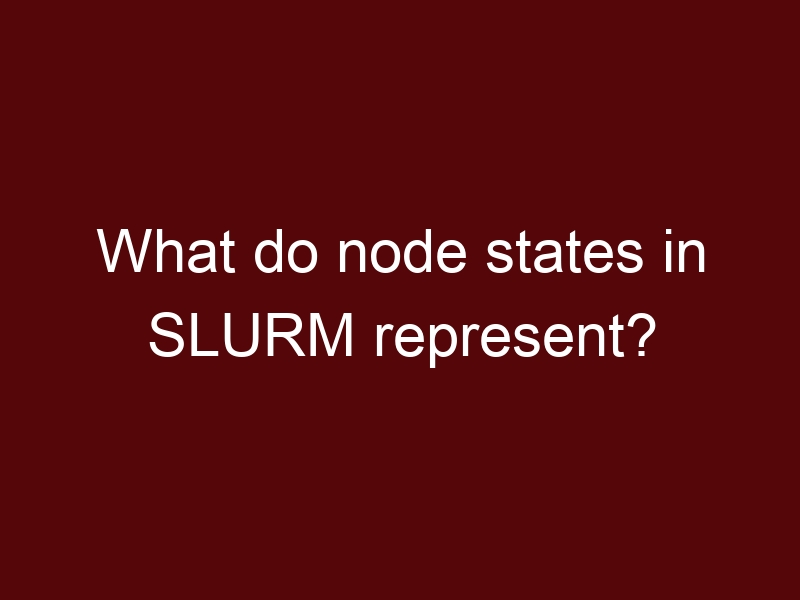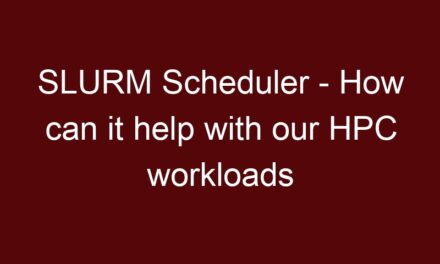In SLURM, node states refer to the different operational states that a compute node in a high-performance computing (HPC) cluster can be in. These states provide information about the node’s availability, utilization, and health, which is crucial for efficient job scheduling and resource management. The following are the common node states in SLURM:
- IDLE: The node is powered on and available for job execution, but it is currently not running any jobs.
- ALLOCATED: The node has been allocated to a specific job and is running the tasks assigned to it.
- COMPLETING: The node is in the process of completing a job. This state usually occurs when a job is reaching its time limit or when the user has requested a clean termination of the job.
- MIXED: The node is in a mixed state, meaning it has some resources available for job allocation while some resources are already allocated to other jobs.
- DRAIN: The node is being drained and will not accept new job allocations. Existing jobs may continue to run on the node until they complete, but new jobs will be routed to other nodes.
- DOWN: The node is unavailable for job allocation due to hardware or software issues. It may be undergoing maintenance or experiencing failures.
- RESERVED: The node has been reserved for a specific user or job and will not be available for other allocations until the reservation period expires.
- FUTURE: The node is being configured to become part of the cluster but is not yet available for job allocation.
- UNK: The node state is unknown or cannot be determined.
Node states are crucial for SLURM’s job scheduler to make informed decisions about where to allocate jobs based on the available resources and their current utilization. It allows the scheduler to ensure that jobs are efficiently distributed across the cluster and that nodes are not over- or under-utilized.
You can view the node states on your HPC cluster using the sinfo command, which provides an overview of the current state and availability of compute nodes in the cluster. Additionally, administrators can use SLURM’s node state configuration options to customize and define additional node states based on the specific needs of their cluster.





